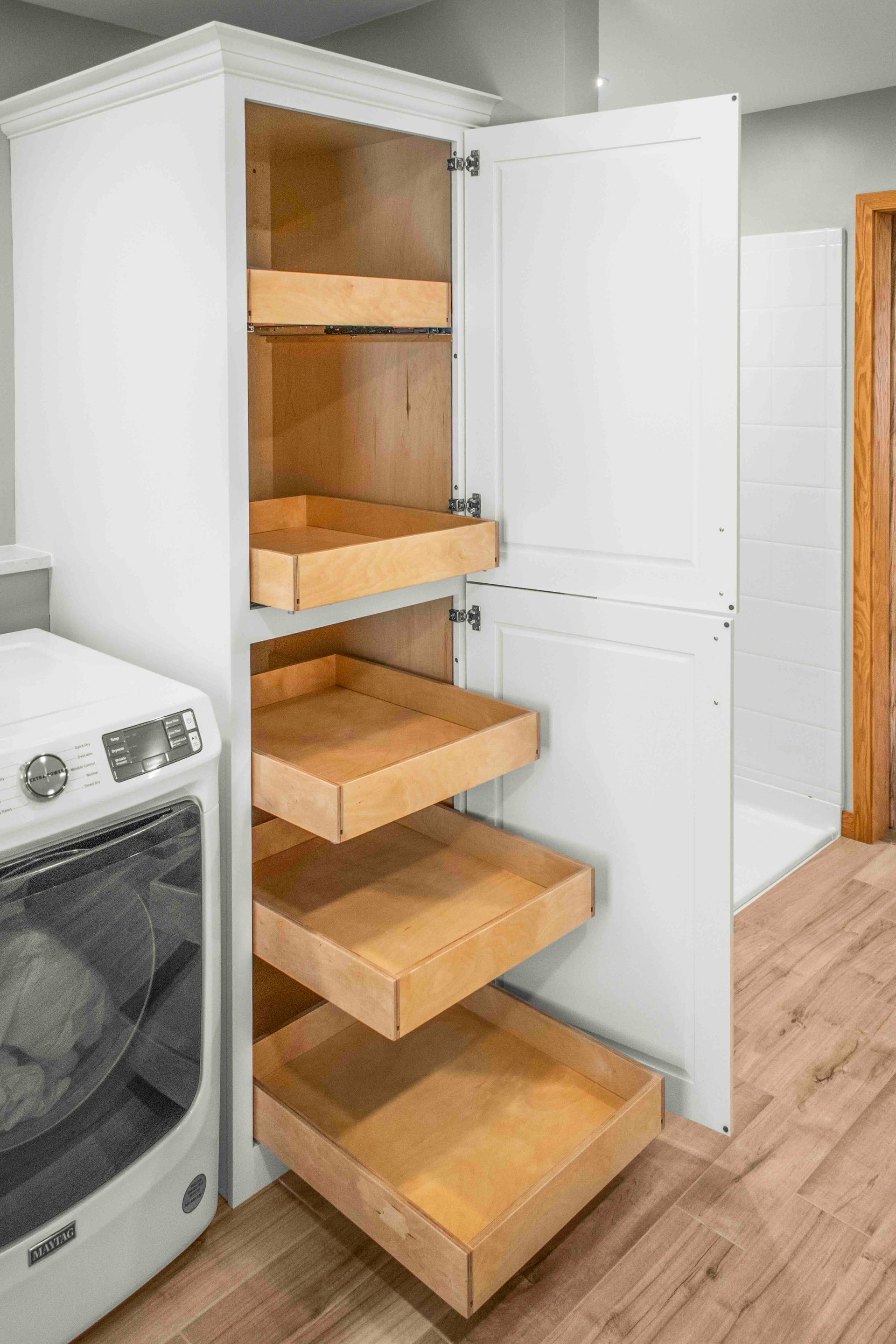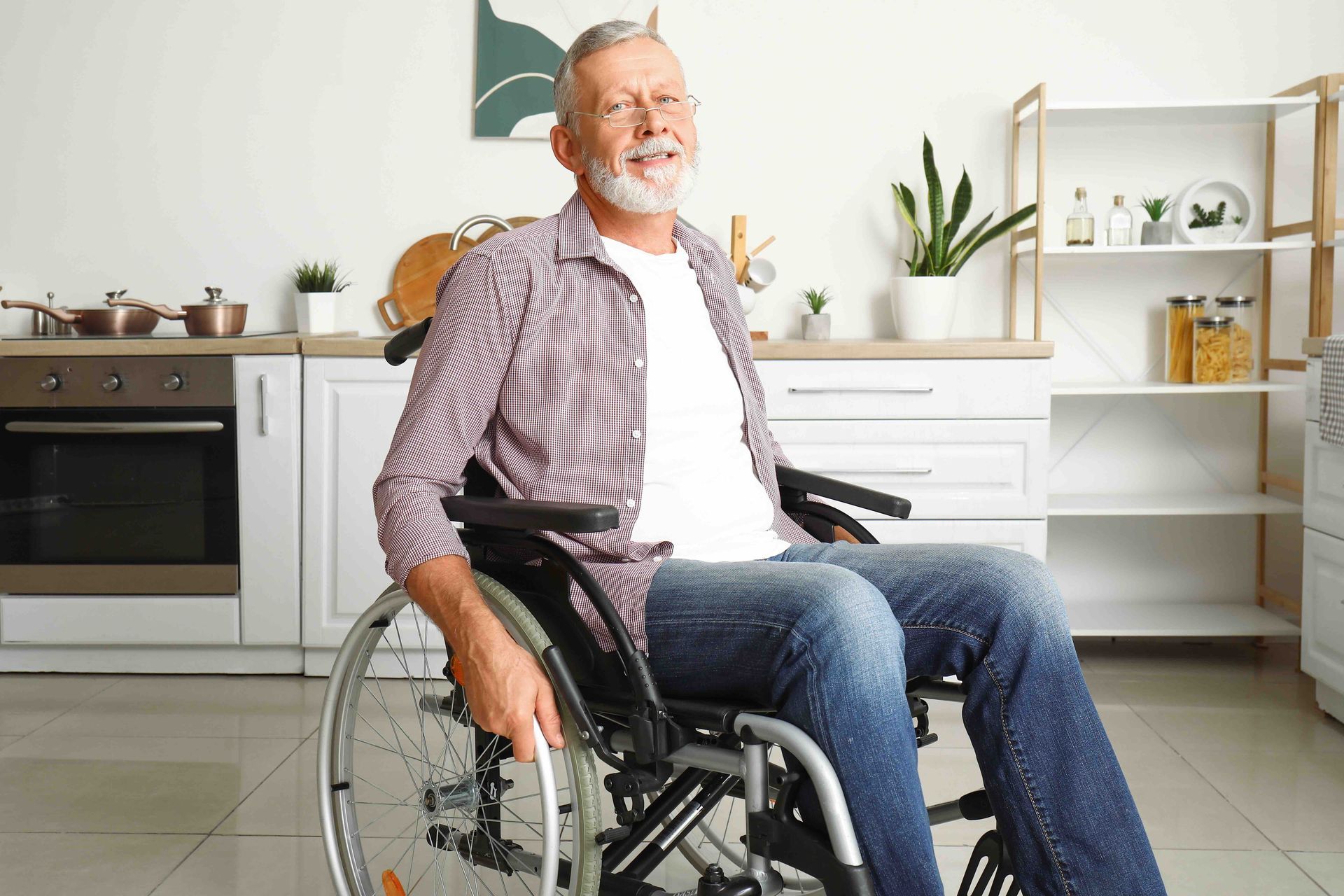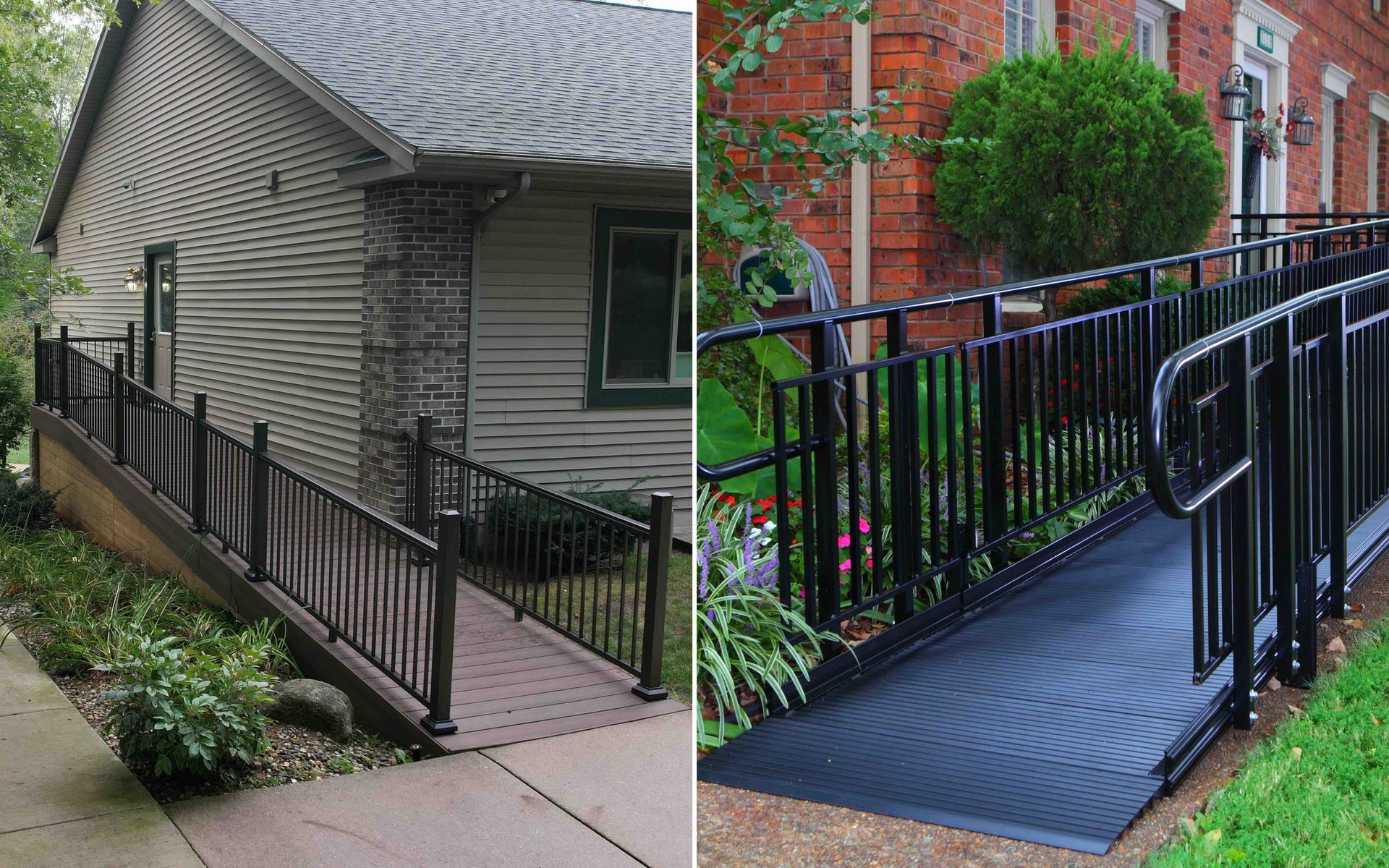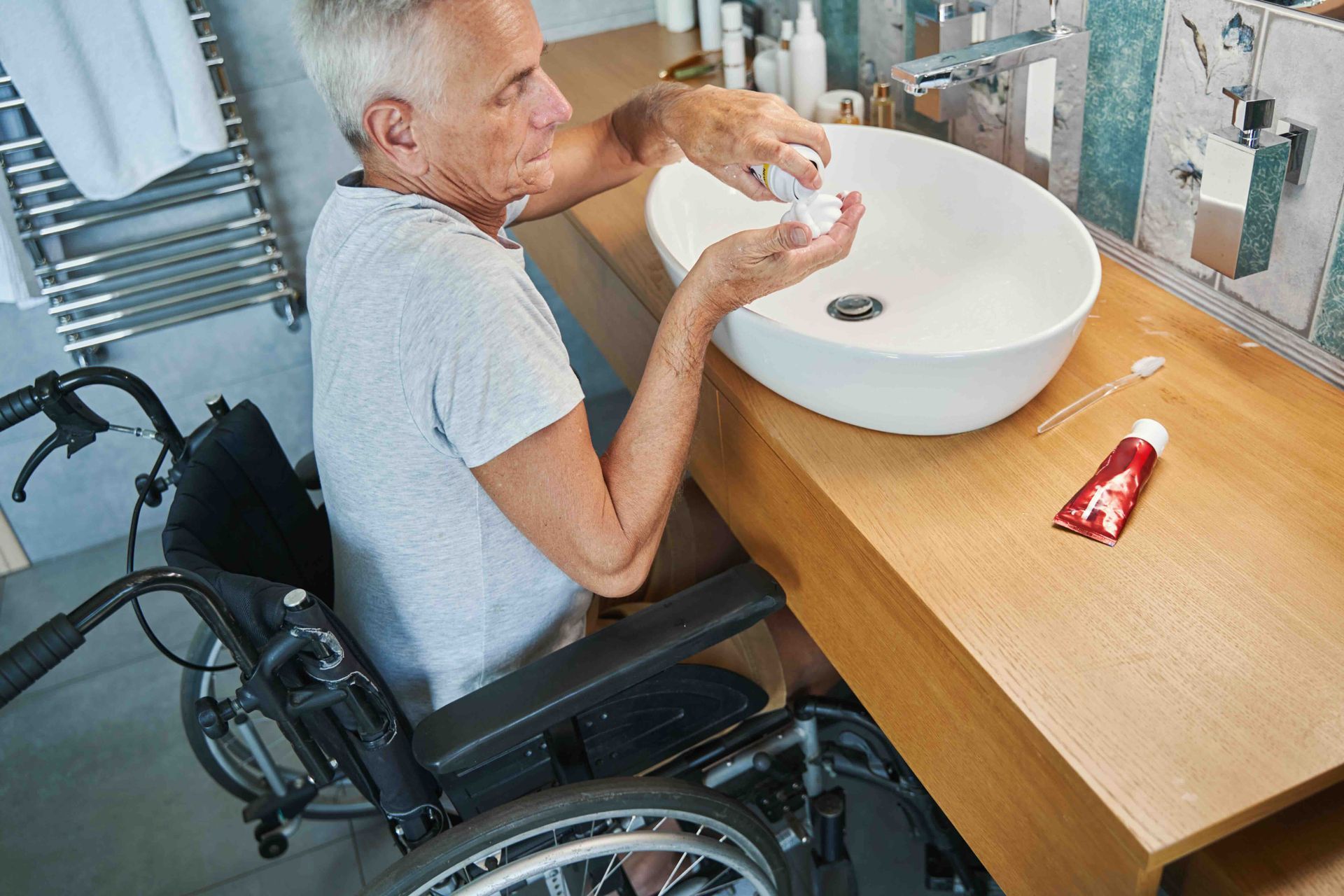It is universal for everyone to want a beautiful and comfortable home. However, some people might believe that creating a space that's accessible for everyone – particularly those with disabilities – comes at the cost of aesthetics. This is a misconception! Accessibility and aesthetics can and should go hand-in-hand. This article explores this concept, dispels the myth, and offers practical tips and design ideas to create a stylish and accessible home for everyone.
Why does an accessible home matter?
Accessibility isn't just about ramps and grab bars in bathrooms. It's about creating a usable and comfortable space for everyone, regardless of age, ability, or temporary limitations. Our
Environmental Access Consulting and Design service is perfect for providing options to enhance your home and provide an accessible living space for everyone. Consider this: Wider doorways benefit not just wheelchair users but also those carrying groceries or young children. Lever door handles are more accessible for everyone, especially those with limited hand strength. By incorporating accessibility features, you create a future-proof home that caters to a broader range of needs and promotes independent living.
- Accessible homes are desirable for a broader range of buyers and may command a higher market value.
- Features like grab bars and well-lit pathways minimize the risk of falls for everyone.
- A well-designed space is easier to navigate and use for everyone, translating to less clutter and a more organized environment.
Accessibility and Aesthetics Unify
The misconception that accessibility equals sterile institutional design often stems from a lack of awareness about the vast array of stylish and functional products. Modern accessibility features can seamlessly integrate into your existing aesthetic, enhancing form and function. Here are some examples:
- Opt for wider doorways (at least 36 inches) and sliding doors to create an open and spacious flow. Replace traditional knobs with sleek lever handles for easier gripping. Matching hardware finishes throughout the house tie the look together.
- Choose slip-resistant flooring with minimal grout lines for a clean and modern look. Consider textured tiles in bathrooms for added safety.
- Strategically placed lighting can create a warm and inviting ambiance while improving visibility. Dimmer switches allow you to adjust the mood based on your needs.
- Traditional shower curbs can be a barrier. Consider installing a sleek linear drain flush with the floor. This creates a seamless look and offers a safe and accessible showering experience. We are able to provide a wide selection of products for any situation. Let us know how we can assist you by calling us today at (616) 477-2685.
Design Ideas for Accessibility and Style
Now that we've established that accessibility can be aesthetically pleasing, let's delve into some design ideas to incorporate into your home:
- Open floor plans create a sense of spaciousness and ease of movement. Define different areas with furniture placement, area rugs, and variations in lighting.
- Invest in furniture with multiple functions. Ottomans with built-in storage, coffee tables with adjustable heights, and chairs with comfortable armrests are stylish and user-friendly.
- Using contrasting colors on walls, floors, and countertops can improve navigation for those with visual impairments. This can be achieved through bold paint choices, patterned tiles, or strategically placed accent pieces.
Accessible Design Inspirations for the Kitchen
The kitchen is often considered the heart of the home, a place for gathering, cooking, and sharing meals. But for those with mobility limitations, navigating a traditional kitchen can be challenging. Thankfully, accessible design doesn't have to mean sacrificing style. Here are some inspirational ideas to create a kitchen that's both beautiful and functional for everyone:
Work Surfaces
Forget the one-size-fits-all approach. Install countertops at different heights to cater to individual needs. This allows everyone, regardless of stature or if they use a wheelchair, to comfortably prepare food, wash dishes, or socialize at the counter.
Ditch the deep, hard-to-reach cabinets. Opt for lower cabinets with pull-out drawers for easy access to pots, pans, and other essentials. This eliminates the need for bending or reaching into awkward positions.
Storage Solutions
Traditional cabinets can become a struggle for those with limited reach. Install slide-out shelves in lower and upper cabinets, bringing items closer for easy grabbing. This minimizes the need to stretch or climb to access items in the back.
Open shelving can be a stylish and accessible option. Arrange frequently used items at eye level for easy grabbing, using decorative baskets or containers to store less-used items.
Appliances
Consider built-in ovens and microwaves placed lower on the wall. This eliminates the need to bend down to reach hot surfaces, promoting safety and ease of use.
Look for appliances with easy-to-grip knobs and levers or even voice-activated controls. This allows everyone to operate appliances independently.
Faucets and Sinks
Replace traditional faucets with pull-down sprayers that extend and retract. This allows for easier rinsing of dishes and pots, especially for those with limited hand strength or dexterity.
Choose a shallow basin depth sink for easier access when washing dishes or using the faucet.
Additional Considerations
Opt for slip-resistant flooring with minimal grout lines for a clean look and improved safety.
Ample and well-placed lighting is crucial. Install task lighting under cabinets and bright overhead lights for optimal visibility.
Ensure ample clearance under the sink area to allow for comfortable maneuvering of a wheelchair or other mobility aids.
By incorporating these accessible design elements, you can create a kitchen that's beautiful and stylish and allows everyone to participate in the joy of cooking and sharing meals in the heart of the home.
Accessibility Tips on a Budget
Creating an accessible home doesn't have to break the bank. Here are some budget-friendly tips:
- Raise the height of a coffee table using risers or add casters to chairs for increased mobility.
- Install grab bars in strategic locations like bathrooms and hallways. There are affordable, stylish options available online or at hardware stores.
- Add task lighting under cabinets or above countertops to improve visibility. Utilize lamps with adjustable arms for added flexibility.
Accessibility is a journey, not a destination. Start small by implementing a few key features and gradually add more as your budget allows.
Five Important Principles of Aesthetics in Home Design

Creating a beautiful and inviting home goes beyond just furniture and décor. It's about understanding and applying design principles to achieve a cohesive and aesthetically pleasing space. Here are five fundamental principles to consider when designing your dream home:
- Balance
Balance is the foundation of good design. It ensures that the visual weight of elements in a room is evenly distributed, creating a sense of order and harmony. Here's how to achieve balance: - Symmetry achieves balance by mirroring elements on either side of a focal point. Alternatively, asymmetry uses elements of different sizes, shapes, or colors to create a visually exciting tension.
- Consider the scale and proportion of furniture and décor relative to the room's size. Oversized furniture in a small room can feel overwhelming, while tiny furniture in an ample space can appear lost.
- Harmony
Harmony refers to a sense of unity and coherence in a space. Elements should complement each other, creating a pleasing visual flow. - Color Palette: Choose a color palette that sets the mood and tone of the room. Use dominant, accent, and neutral colors to create a cohesive look.
- Cohesive Style: Using personal touches, choose furniture, décor, and textiles with common design elements like style, finish, or material. This creates a sense of connection and avoids a cluttered feel.
- Rhythm and Repetition
Rhythm and repetition use visual patterns to create a sense of movement and flow in a room. Here's how to incorporate them: - Use patterns strategically throughout the room, whether on rugs, wallpaper, or textiles. Repeating a pattern in different scales or colors creates a sense of rhythm.
- Create visual lines by repeating shapes or colors throughout the room. This can be achieved through furniture placement, artwork arrangement, or architectural details.
- Emphasis
Every room needs a focal point that draws the eye and creates visual interest. Here are some ways to create emphasis: - Create a focal point using a bold piece of furniture, striking artwork, or a contrasting wall color.
- Strategic lighting can highlight a focal point. Uplights for artwork, pendants over a dining table, or a statement chandelier can add emphasis.
- Details Matter
The finishing touches can make or break a space. Pay attention to details to elevate the overall design. - Carefully chosen accessories like throw pillows, lamps, and decorative objects add personality and style.
- Don't forget the finishing touches, like trim work, moldings, and hardware. Ensure they complement the overall design style.
By understanding and applying these five principles, you can create a home that is functional and aesthetically pleasing, reflecting your unique style and personality.
Creating a Beautiful and Functional Space for Everyone
By following these tips and letting go of the misconception that accessibility sacrifices aesthetics, you can create a home that is both stylish and welcoming to everyone. Remember, accessibility is not just about disability; it's about creating a comfortable, safe, and functional space for everyone who uses it. A beautiful and accessible home is an investment in your well-being and the well-being of those around you. Let's embrace inclusive design and create homes that are truly beautiful for all.
If you would like to discuss options for your home, complete our simple
online form, and we will contact you.
TALK TO THE EXPERTS OF LAKESHORE BARRIER FREE TODAY!
We believe that everyone should have access to every area of their home! We work directly with you to make sure that every grab bar, bathroom sink, kitchen countertop, patient lift, and more is at the perfect location for you and your loved ones. Call us at
(616) 477-2685 or email us at
Info@LakeshoreBarrierFree.com
Share this blog






